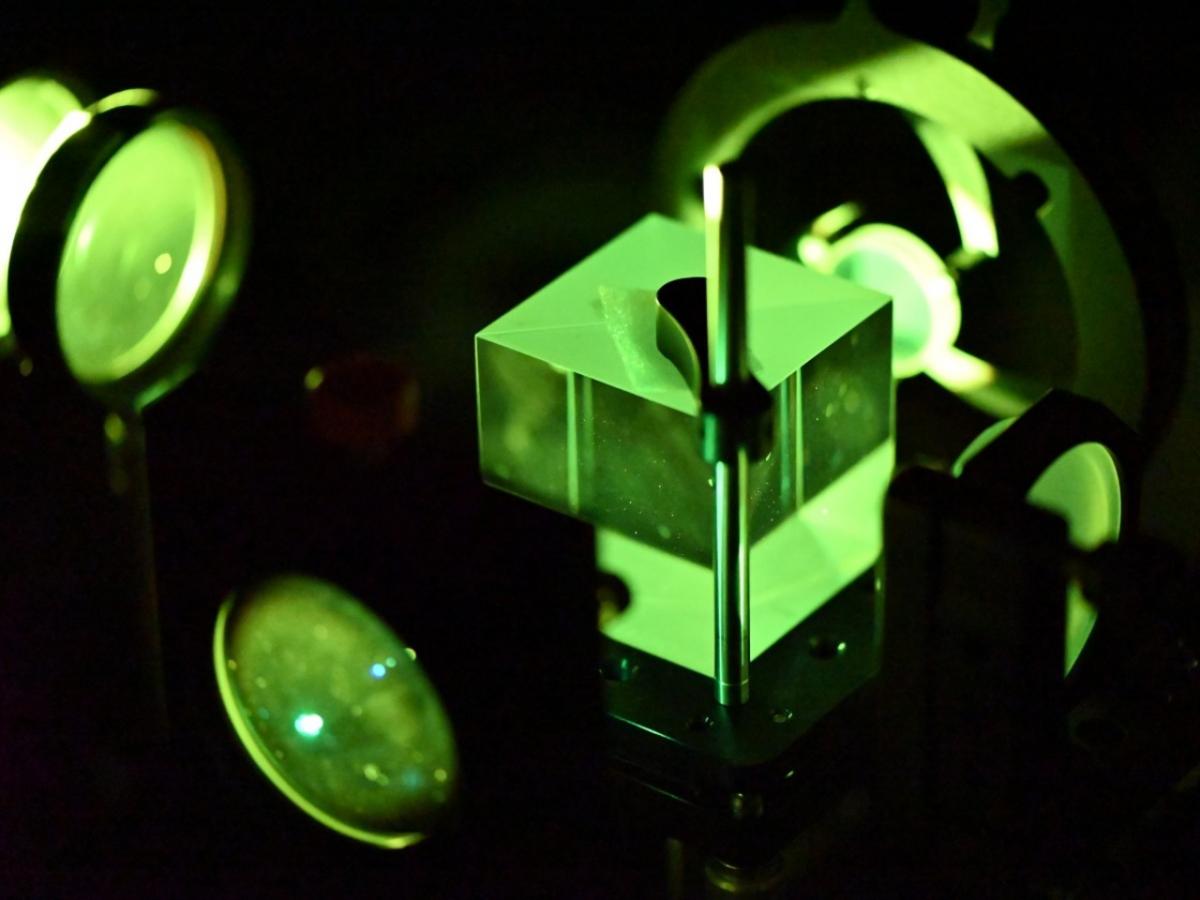JLO team has refined and improved the efficiency of quantum entanglement tests using artificial intelligence

Scientists from the Joint Laboratory of Optics, a collaboration between Palacký University and the Institute of Physics of the Czech Academy of Sciences, have significantly refined and improved the efficiency of quantum entanglement tests, which play a crucial role in the development of quantum computers, by incorporating artificial intelligence. Their research results were recently published in the prestigious journal Physical Review Research.
Entanglement, or quantum entanglement, is a remarkable phenomenon of quantum mechanics. Scientists refer to quantum entanglement when the quantum state of two or more particles is interconnected regardless of their distance from each other. If experts obtain certain information about one particle, they simultaneously gain information about the other. This property has fascinated scientists since the 1920s, becoming a subject of scientific debate between Albert Einstein and Niels Bohr.
Today, quantum entanglement has become the cornerstone of many quantum information protocols and algorithms. It has given rise to quantum teleportation, quantum cryptography, and forms the basis of Shor's algorithm. "Tests focused on quantum entanglement are therefore important. Precise detection methods are highly sought after," stated Vojtěch Trávníček from the Joint Laboratory of Optics.
Experts encode information into quantum particles such as electrons or photons. These particles then reach a certain quantum state. A set of these particles can be in a quantum state that can be labeled as entangled, or conversely, in a separable state - that is, unentangled. Being able to distinguish between these two basic possibilities is crucial in quantum information science.
"Conventional tests of quantum entanglement are designed never to label a separable state as entangled. Thus, they are, at least theoretically, perfectly selective. This is good, but it comes at the cost of reduced sensitivity of the tests, or their ability to detect as many entangled states as possible," noted Vojtěch Trávníček.
Therefore, scientists asked whether by reducing the demands for the best selectivity of tests, they could increase their sensitivity. This would then reveal many more quantum-entangled particles. "For this purpose, we used neural networks and machine learning and trained a model test capable of detecting entanglement. We can thus change the ratio between sensitivity and selectivity and also vary the number of measurements used for entanglement detection," the physicist added.
By slightly reducing the selectivity of the test, the scientists managed to significantly increase their sensitivity. As a result, they detected many more entangled states of quantum particles than conventional tests. "Moreover, this ratio can be easily adjusted to find the optimal setting for a given application. We continue to explore the use of artificial intelligence for entanglement detection and already have very promising results," concluded Vojtěch Trávníček.
Text: Šárka Chovancová



